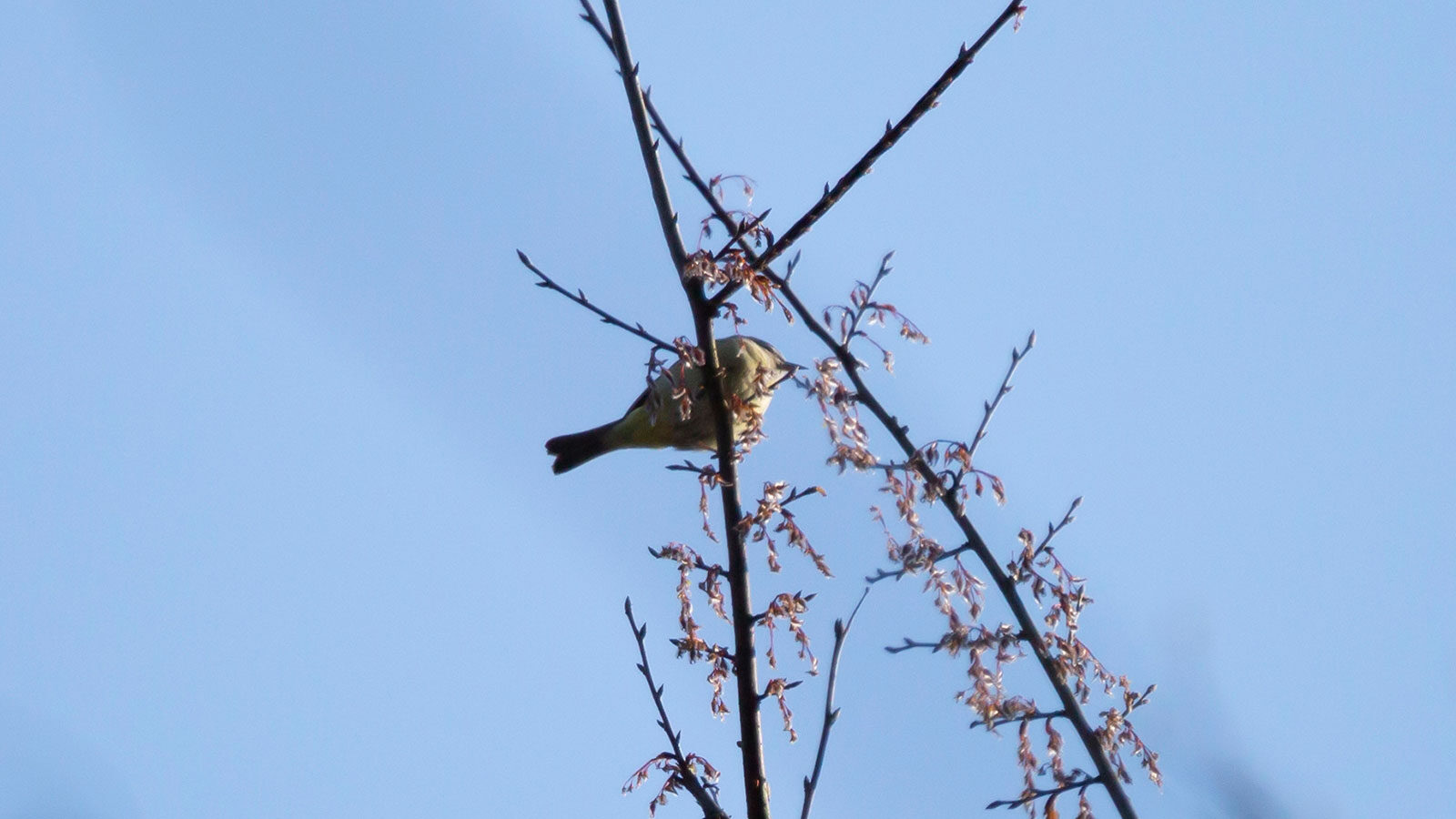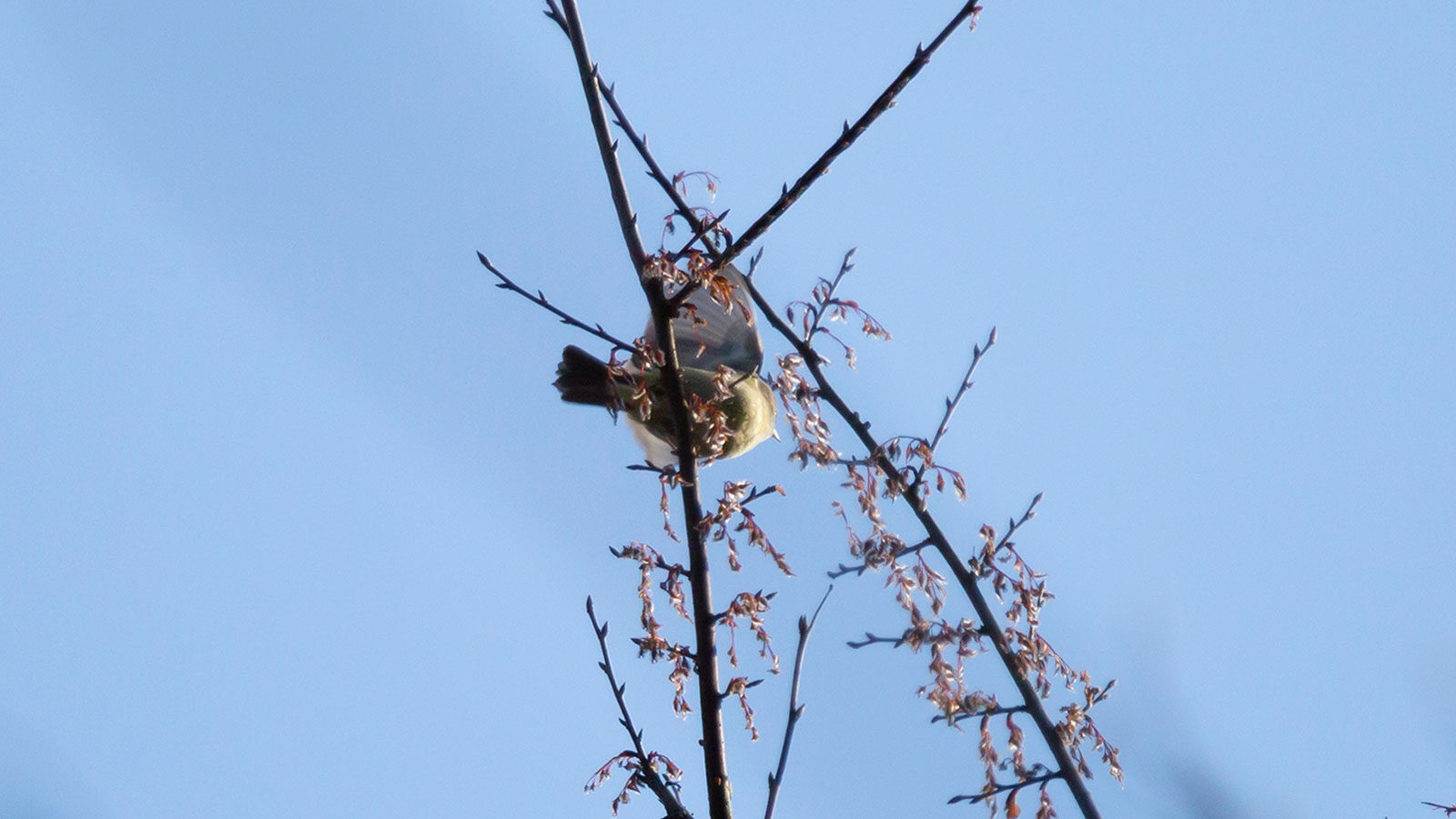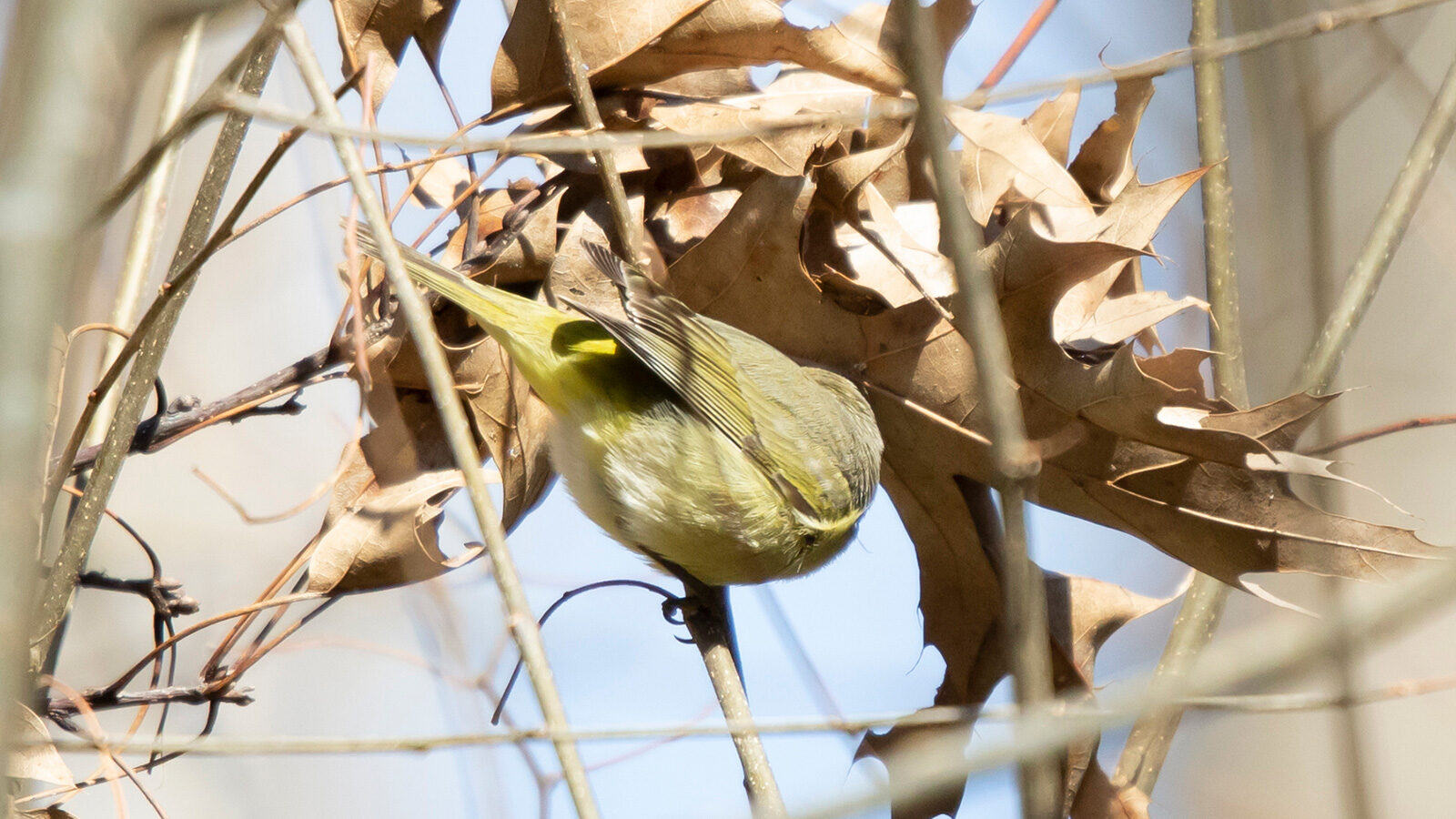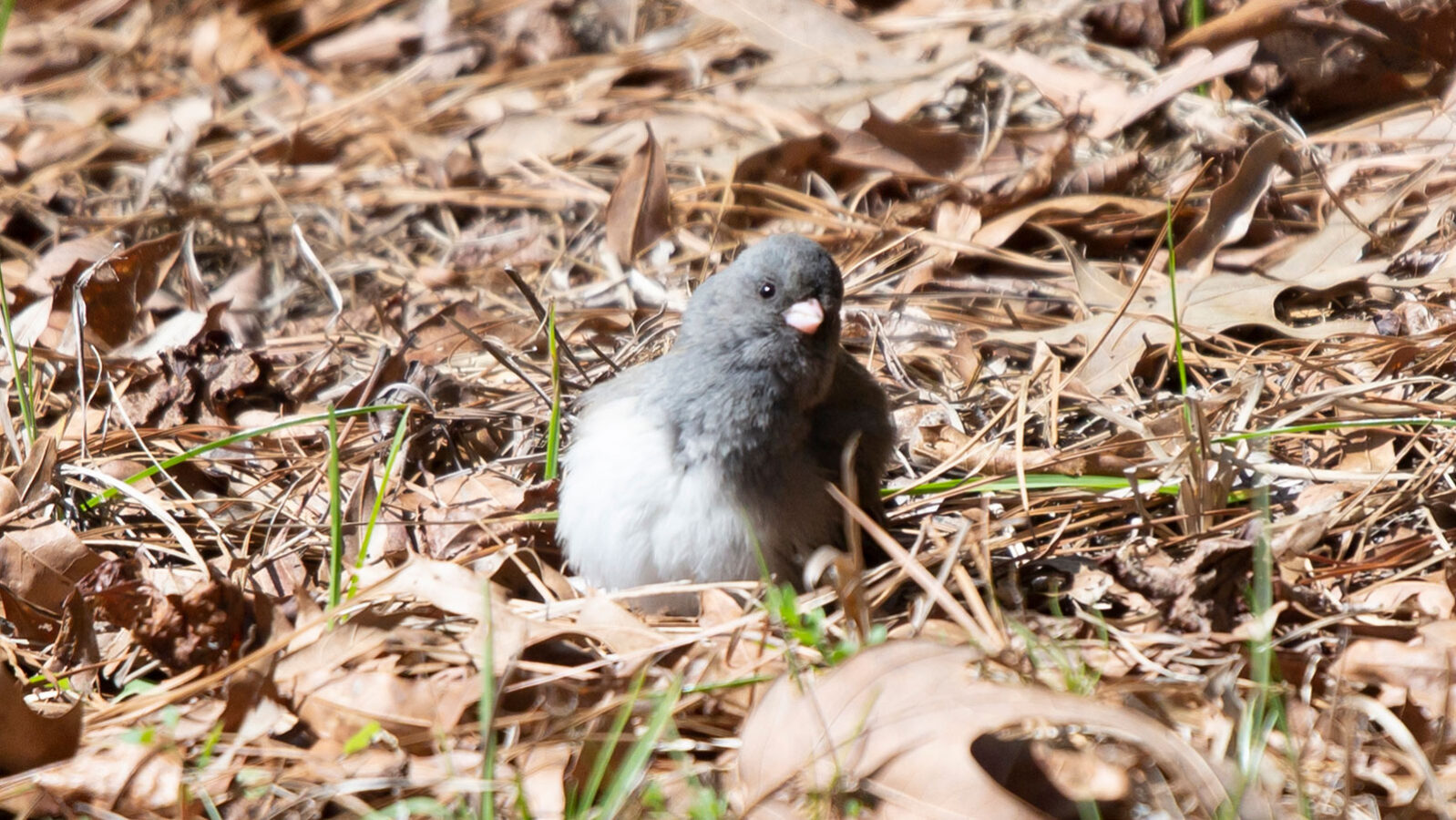
Did you know that mourning warblers protect their nests by pretending to have broken wings to distract predators?
Mourning Warblers
at
a Glance

Key Features:
Mourning warblers are olive yellow with gray heads. Males also have black chests.
Least Concern - Population Decreasing
Habitat:
Forests
nesting habits:
Mourning warblers build cup-shaped nests near the ground made of bark, grass, hair, leaves, rootlets, sedges, and weeds.
seasons mourning warblers are active in our area:
Spring, fall
Diet:
Arthropods, berries
hunting Behavior:
Mourning warblers forage in the branches of trees and shrubbery.
commonly confused with:
Dark-eyed juncos, orange-crowned warblers
Adult male mourning warblers are often confused with adult dark-eyed juncos.

Orange-crowned warblers are often confused with immature female mourning warblers.
